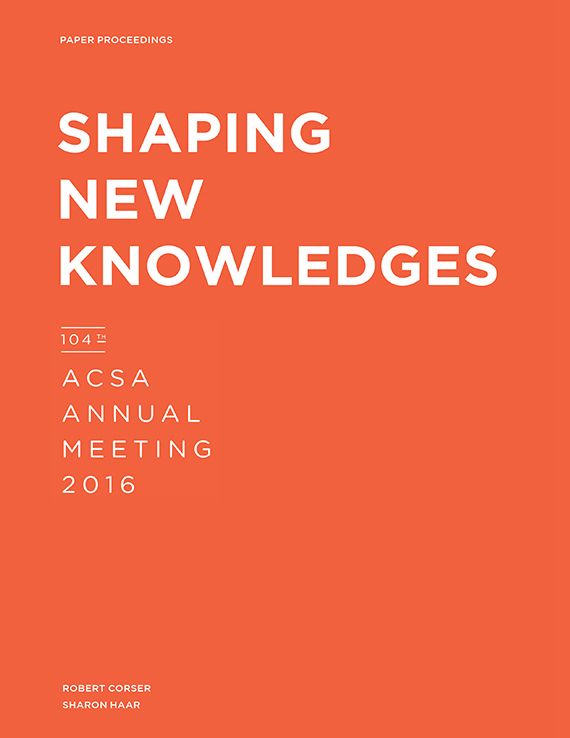Author(s): Anthony Raynsford
Steen Eiler Rasmussen’s now classic treatise of 1959, Experiencing Architecture, repeatedlyturns to the question of historical imagination as a phenomenological tool for engaging withthe architectural present. The point of history was no longer to give triumphalist, teleologicalaccounts of modernism’s seemingly inevitable rise. Rather, it was to reconnect the increasinglyabstract and technocratic discipline of architecture back into the intuitions of the sensesand of the body. In the quote above, Rasmussen assumes the possibility of a hermeneuticleap, in other words, that someone in the 1950s could enter into a historical-material experienceof the past, of rhythms and ways of life that had, in fact, disappeared and were nolonger even relevant for modern architects. This hermeneutic exercise presumes, moreover,not a primarily intellectual experience of reading about history but a more especially sensoryexperience of deep engagement with historical architecture. It was not just a visual,spatial experience, but equally a tactile, prosthetic experience of feeling one’s way into thevery thingness of historical buildings. In addition to the philosophical question as to whethersuch a hermeneutic leap is, in fact, possible, there are, perhaps, even more interesting questionsconcerning history’s relevance for contemporary architectural practice. Why would anavowedly modernist architect and city planner, with a predilection for functionalist simplicity,feel it necessary that architectural students should develop this historical sensibility? Giventhat Experiencing Architecture is still in print, does its invocation of history-as-embodiedexperiencestill have relevance for architectural practice in a dematerializing age of digitaltechnocracy?
Volume Editors
Robert Corser & Sharon Haar
ISBN
978-1-944214-03-6

 Study Architecture
Study Architecture  ProPEL
ProPEL 
